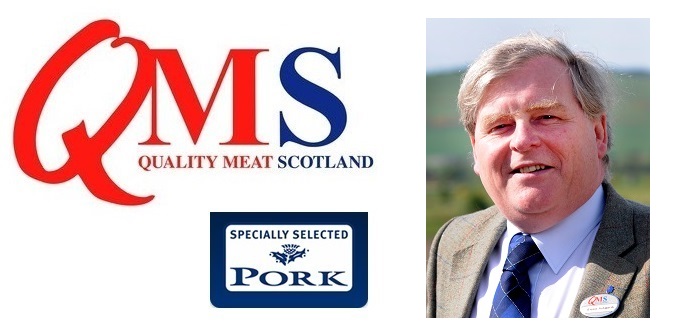Livestock farmers are still facing a challenge to achieve positive margins, despite falling input costs, with the year-on-year shortfall in prices being “most marked” in the pig sector, says Quality Meat Scotland (QMS).
“While it has to be recognised that some input costs have fallen, they have not fallen fast enough to allow many livestock farmers, and pig producers in particular, to maintain their margins,” said QMS’s head of economics, Stuart Ashworth, pointing out that pig sector prices are trailing last year by 16%, which is worse than the downturn for either beef or lamb.
By their very nature, livestock growth rates are affected by a multitude of factors ranging from climate variation to genetic capability. For example, said Mr Ashworth (pictured above), a period of wet or cold weather requires an animal to eat more feed just to maintain its frame before growing, thus reducing the benefit of falling animal feed prices.
“Improving or maximising the existing genetic capability of livestock is not a fast win,” he said. “At one level it requires investment in animal science research and at the other a willingness and capital resource from producers to invest. Without a sufficient margin it is difficult to finance the investments needed to continue to drive efficiency into any business.”
Pointing out that price volatility in the livestock sector is also affected by the over-riding influence of supply and demand, Mr Ashworth added that the Russian restrictions on trade have definitely “destabilised” the European pig market, forcing producer prices down in the process.
As for the future, he warned that the European market could be prey to increased imports of meat, due to a number of factors. These included the ongoing free trade talks with the South American trading block Mercosur, the USA, New Zealand and Australia, all carrying the potential to add “even greater volatility” to farm gate prices while doing little to increase EU and UK access to growing consumer markets.
“On the other side of the equation sits demand,” he said. “While a growing world population is seen as a driver for increased consumption of meat, offsetting this is the level of income, as illustrated by the slowdown in China’s economic growth, where demand may remain but prices paid have to dip.”
Producers, he concluded, can only respond to such volatility by delivering product that meets the demands of the marketplace in respect of quality, provenance and product promotion.
“Generally price volatility moves quicker than the animal rearing process, however, meaning that prices received at the end of the rearing period can be very different from the expectation when the breeding and rearing process began,” said Mr Ashworth. “Consequently measures to maximise the efficiency of the production process may offer the best risk management tool.
“To do this will often require investment and without profit to reinvest or investment support, the funding for investment in production efficiency will be held back.”




